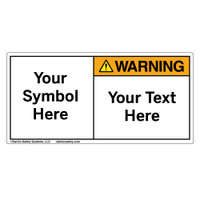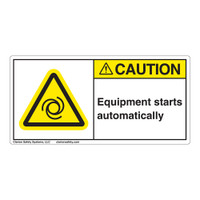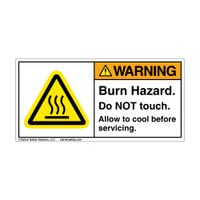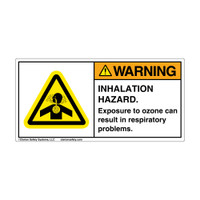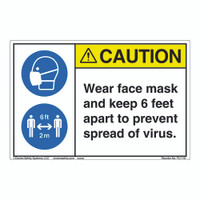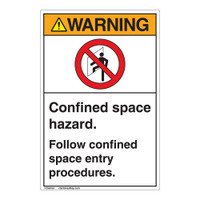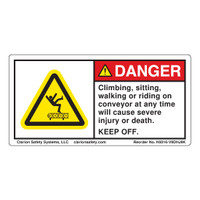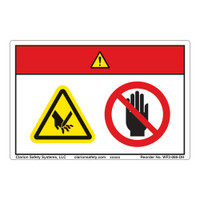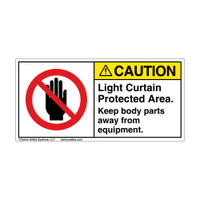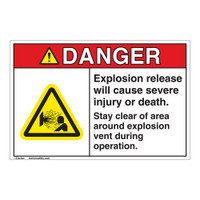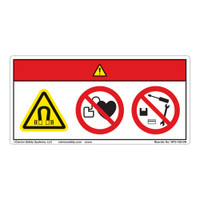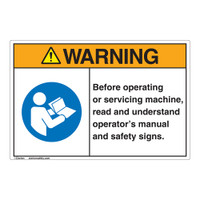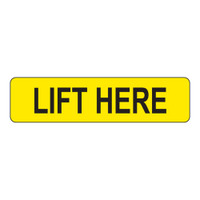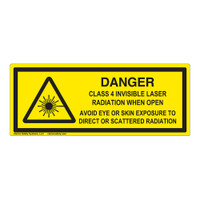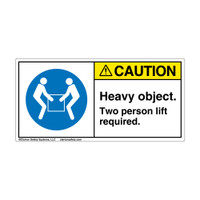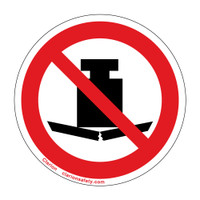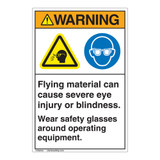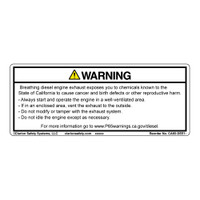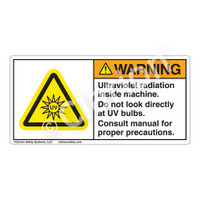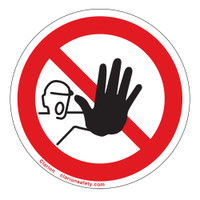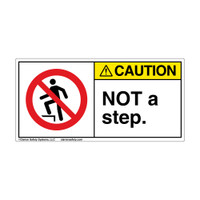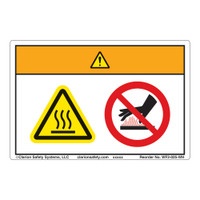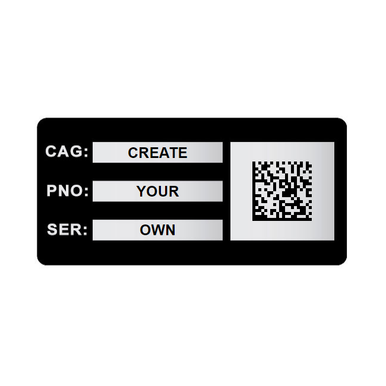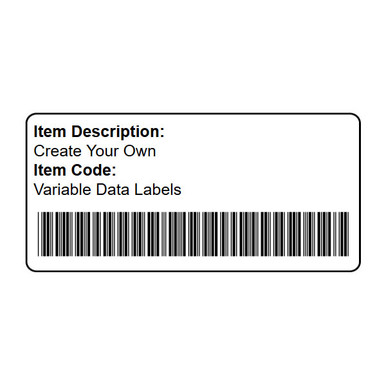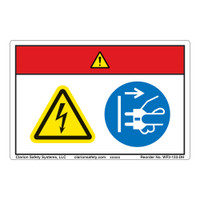Cutting Hazard Labels
Machine safety signs and labels play an essential part in risk reduction, and can help you meet OSHA requirements. It’s important to consider the latest ANSI and ISO standards and today’s best practices for safety communication and risk reduction when selecting labels for your application. You can rely on Clarion Safety’s ANSI, ISO, and OSHA warnings expertise for help. We specialize in supplying product manufacturers and workplaces with the most up-to-date, standards compliant labels. In fact, over the past 30+ years, we’ve helped to write the standards you want to meet.
With Clarion Safety label products, you can select from a variety of label format options (multi-symbol and text, symbol only, symbol and text, and wordless formatted labels) as well as symbol options to best fit the potential hazard. Keep in mind that the use of symbols in warnings and instructions is essential to the ISO 3864-2 standards and is encouraged in the ANSI Z535.4 standards. Our labels use internationally recognized, standardized ISO 7010 or ISO 7010-styled symbols.
Do you have questions on risk or hazard assessments? Our engineers at our subsidiary, Machine Safety Specialists (MSS), and our warnings experts at Clarion Safety can work independently, or with you and your team to ensure your machinery is effectively labeled and fully complies with U.S. and/or international standards. If you need assistance ensuring your products or machinery are properly labeled and fully compliant with the applicable U.S. and international safety standards, contact us today.
At Clarion Safety, we understand the importance of safety label durability. Labels need to stand up to your product’s expected environment, such as exposure to UV, high temperatures, or chemicals. Potential accidents – and your company’s liability exposure – depend on your label material choices. We offer the finest adhesives, base materials and overlaminates, including premium quality 3M materials.
Our cutting hazard labels have been developed and tested to withstand abrasive chemical washdowns, water, heat, and strong ultraviolet light. We have a variety of standard material options available, including options for both indoor and outdoor use. If the standard choices that you see don’t meet your requirements, we’re standing by to find a solution; we offer a wide range of custom material options.
-
1
-

Warning/Pinch Point Label (WF2-083-WH)
Starting at $0.83 / each
2
2
-
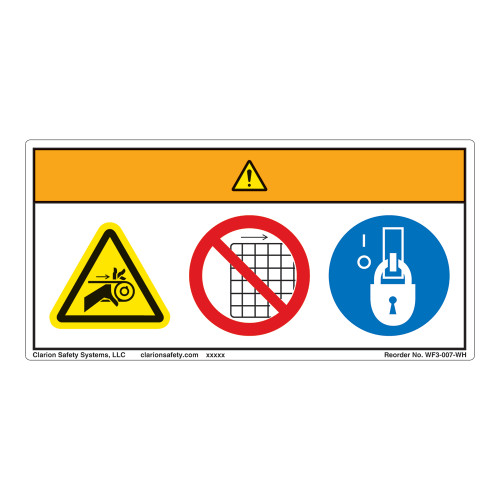
Warning/Pinch Point Label (WF3-007-WH)
Starting at $0.86 / each
3
3
-

Warning/Pinch Point Label (WF3-135-WH)
Starting at $0.86 / each
4
4
-

Warning/Pinch Point Label (WF3-139-WH)
Starting at $0.86 / each
5
5
-
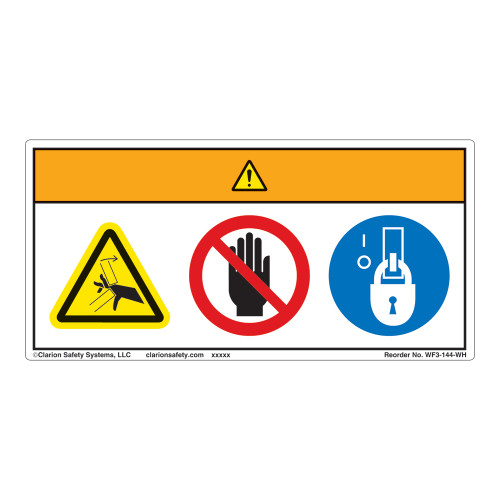
Warning/Pinch Point Label (WF3-144-WH)
Starting at $0.86 / each
6
6
-

Warning/Pinch Point Label (WF3-145-WH)
Starting at $0.86 / each
7
7
-

Warning/Pinch Point Label (WF3-147-WH)
Starting at $0.86 / each
8
8
-

Warning/Pinch Point Label (WF3-148-WH)
Starting at $0.86 / each
9
9
-
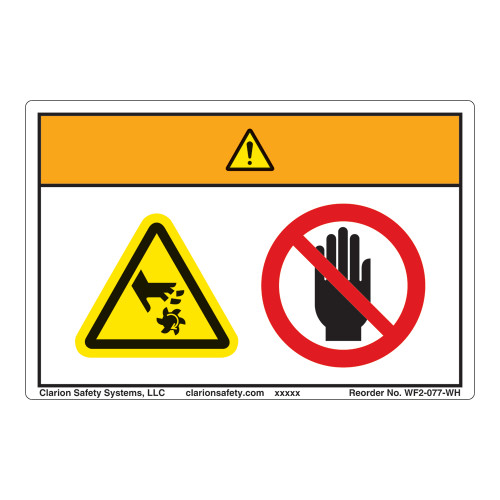
Warning/Rotating Blade Label (WF2-077-WH)
Starting at $0.83 / each
10
10
-
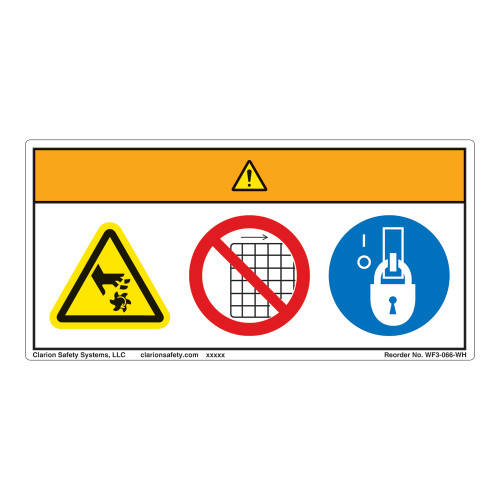
Warning/Rotating Blade Label (WF3-066-WH)
Starting at $0.86 / each
11
11
-

Warning/Rotating Blade Label (WF3-118-WH)
Starting at $0.86 / each
12
12
-

Warning/Rotating Blade Label (WF3-124-WH)
Starting at $0.86 / each
13
13
-

Warning/Rotating Blade Label (WF3-125-WH)
Starting at $0.86 / each
14
14
-
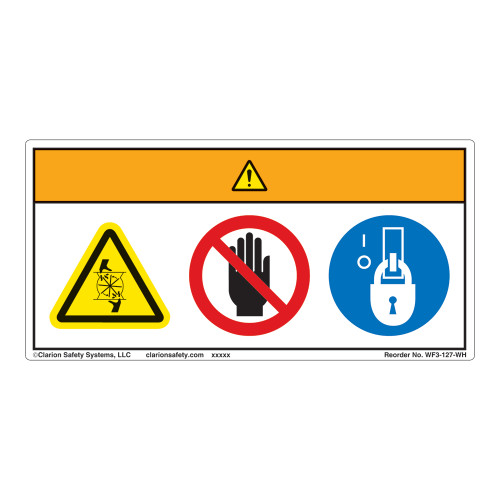
Warning/Rotating Blade Label (WF3-127-WH)
Starting at $0.86 / each
15
15
-

Warning/Rotating Blade Label (WF3-130-WH)
Starting at $0.86 / each
16
16
-
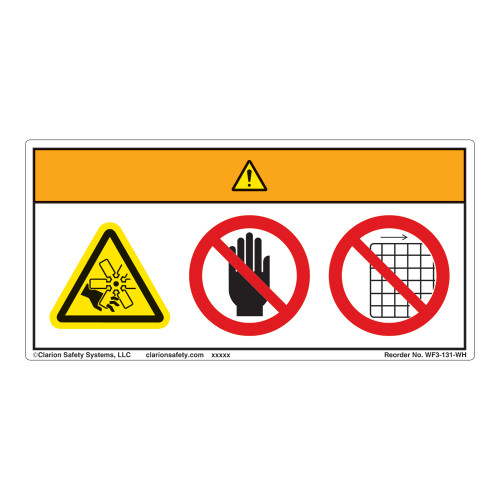
Warning/Rotating Blade Label (WF3-131-WH)
Starting at $0.86 / each
17
17
-

Warning/Rotating Blade Label (WF3-133-WH)
Starting at $0.86 / each
18
18
-

Warning/Rotating Fan Blade Label (WF2-075-WH)
Starting at $0.83 / each
19
19
-
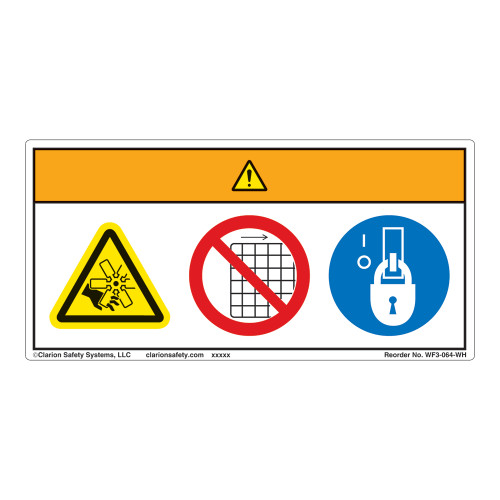
Warning/Rotating Fan Blade Label (WF3-064-WH)
Starting at $0.86 / each
20
20
-

Warning/Shear Hazard Label (WF2-069-WH)
Starting at $0.83 / each
21
21
-

Warning/Shear Hazard Label (WF2-071-WH)
Starting at $0.83 / each
22
22
-

Warning/Shear Hazard Label (WF3-062-WH)
Starting at $0.86 / each
23
23
-

Warning/Shear Hazard Label (WF3-063-DH)
Starting at $0.86 / each
24
24
-

Warning/Shear Hazard Label (WF3-111-WH)
Starting at $0.86 / each
25
25
-

Warning/Shear Hazard Label (WF3-128-WH)
Starting at $0.86 / each
26
